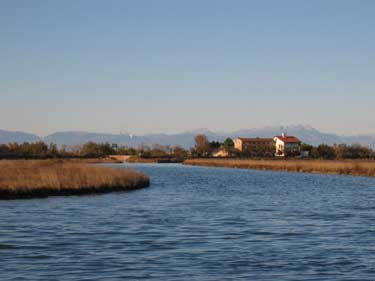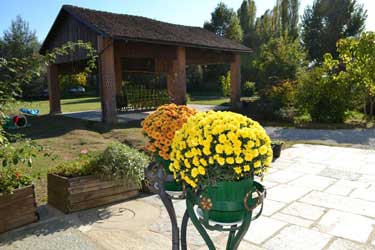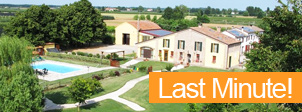Who among us does not love ice cream? This very sweet and refreshing food is the star of our route today, which leads us to retrace the most important stages in the history of ice cream in our country, between truth and legend, and of course we can’t forget a relaxing stop at the farmhouse.
1) SICILY
The introduction of ice cream in Italy began in Sicily, with the invasion of the Arabs in 827 AD: using the Etna snow and fruit juices of this land, they perfected the art of “sherbet” and “granita”, thanks to the addition of cane sugar. The snow placed in baskets, covered in straw and sea salt, was transported by night to the city, where it was deposited in deep cellars, and kept there for several months.
In the following centuries, Sicily played a decisive role in the spread of ice cream throughout Europe: it was in fact the Sicilian Francesco Procopio who first export the dessert to Paris in 1660. Thanks to new creations such as icy waters, “anise flowers”, “flowers of cinnamon”, “frangipani”, and “strawberry sorbet”, the Café Procope soon became one of the most fashionable cafés of the French capital.
For our stay in Sicily, here we are at Farmhouse Masseria La Chiusa, in San Giuseppe Jato in the province of Palermo, an instance of rural architecture, both sober and refined. The farm is part of a cultural network through the promotion of local cultural shows, exhibitions, conferences and tasting of typical products from the Jato Valley. The farm is also the ideal starting point to discover the hidden treasures of this enchanting corner of Sicily: the Archaeological Park that tells thousands of years of history with its Greek, Phoenician, Byzantine and Arab settlements, and many nature trails that run through the Valley.
2) NAPLES
Our tasty dessert from Sicily soon began to expand towards the north, in Naples, then Florence, Milan, Venice, establishing itself as a valuable food with refined recipes for sorbets made from citrus fruits, mulberry and jasmine. In Naples, it was Antonio Latini from Marche, at the service of the regent of the Spanish Reign of Naples in 1659 to give the Neapolitans a special skill in the art of making “sorbetti”: “It seems that everyone in Naples is born with the genius, and with the instinct of making sorbetti “.
Here we are in Sorrento, near Naples: let’s reach Farmhouse Podere Don Peppe, a family-run farm in the hills just over 2 miles from the sea, halfway between Positano and Sorrento. It’s a traditional farm, where the land in cultivated in full respect of the environment, and where the climate confers characteristic aromas and flavors to the products. The rooms are tastefully decorated with an elegant mix of rural and fashionable furnishings antique furniture, while the restaurant serves only traditional dishes from the typical peasant cuisine prepared with the utmost care for quality.
3) VENICE
In Venice it was Marco Polo returning from China, where he had lived eighteen years at the court of Kublai Khan, who not only brought spices and fine silks, but also useful methods for freezing foods with new suggestions for refrigeration, no longer with snow, but rather by mixing water and saltpetre, thus introducing an innovation that was useful in the production of ice cream. But it was also during the nineteenth century that ice cream spread among the population of the province of Belluno and the Dolomites area, where a tradition started in the mountains of artisan ice cream made from milk and good natural ingredients.
The Farmhouse La Barena is located in Jesolo,
in the quiet of the north lagoon just 40 km from Venice. Ideal for a holiday of peace and serenity, La Barena lies in a unique environment although it is not far from the tourist beach of Jesolo. The farm offers the opportunity to stay in both rooms and apartments and offers the unique experience of sailing across the lagoon to the islands of Venice with boats for hire with the Vianello family, who for generations have been the owners of this beautiful farmhouse.
4) FLORENCE
The real triumph of ice cream on the tables takes place in the sixteenth century, with the arrival from the newly discovered continents of fruit, new plants, herbs and spices, tea, coffee, and cocoa. At the Medici court in Florence during the Renaissance, the sorbets have a place of honor within the feasts and banquets. Among the prominent personalities of this environment there is Ruggeri, a poulterer and cook in his spare time, unexpected and snubbed by all the other chefs participating in a competition held by the lords of Florence with the theme: “The most unusual dish you’ve ever seen”. Ruggeri would make a frozen dessert with almost forgotten recipes and with a bit of imagination. With his “sorbet” he won the contest and became famous throughout the region and sought-after everywhere. Also in Florence in the sixteenth century, we find Bernardo Buontalenti, a man of genius, who built ice chests for the storage of snow and ice: preserving itself for so long, the snow could be taken during the summer to refresh and satisfy the palates of gourmets. But being a skilled chemist and thanks to these skills, he prepared a mixture similar to the one that is still used today to produce artificial ice.
Just 9 km from the historic center of Florence, Farmhouse Podere Le Cave is a typical Tuscan farmhouse nestled in the lush greenery of the hills surrounding Florence. Surrounded by vineyards and olive groves in the characteristic landscape of the Tuscan countryside, the property is surrounded by a fantastic garden with colorful flowers and aromatic plants, an inviting and refreshing swimming pool overlooking a breathtaking view over the city of Florence. Horse-riding and many other activities in contact with nature are organized, a short distance from the beautiful city of Florence and its artistic treasures.
5) TURIN
In the early 1700s the cold dessert was well established in all courts and capitals of Europe while at the same time, the most prestigious cafes of Venice, Turin, Naples and Palermo, offered special menus based on ice cream. Especially in Turin at the court of Savoy the ice cream meets the local traditions and some delicious creams originated especially with hazelnuts and chocolate, leaving plenty of room for the imagination of the ice cream maker.
Farmhouse Cascina Verne is located in Carmagnola, in a renovated eighteenth-century convent,
surrounded by green countryside. It is located in a flat area a short distance from the Roero hills, and it is an ideal starting point to discover the cultural and natural wealth of these places. Walking along the paths through, you can relive the architecture and traditions of these rural areas. Guests will be offered a few itineraries to discover the historical and artistic heritage, while the restaurant features the most renowned specialties of the Piedmontese cuisine.




Comments are closed.